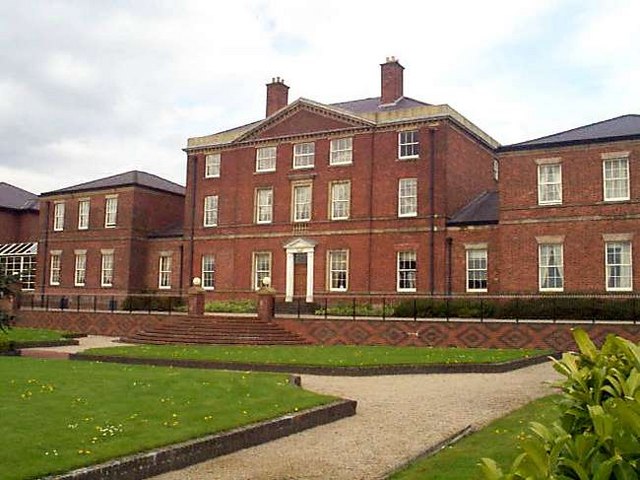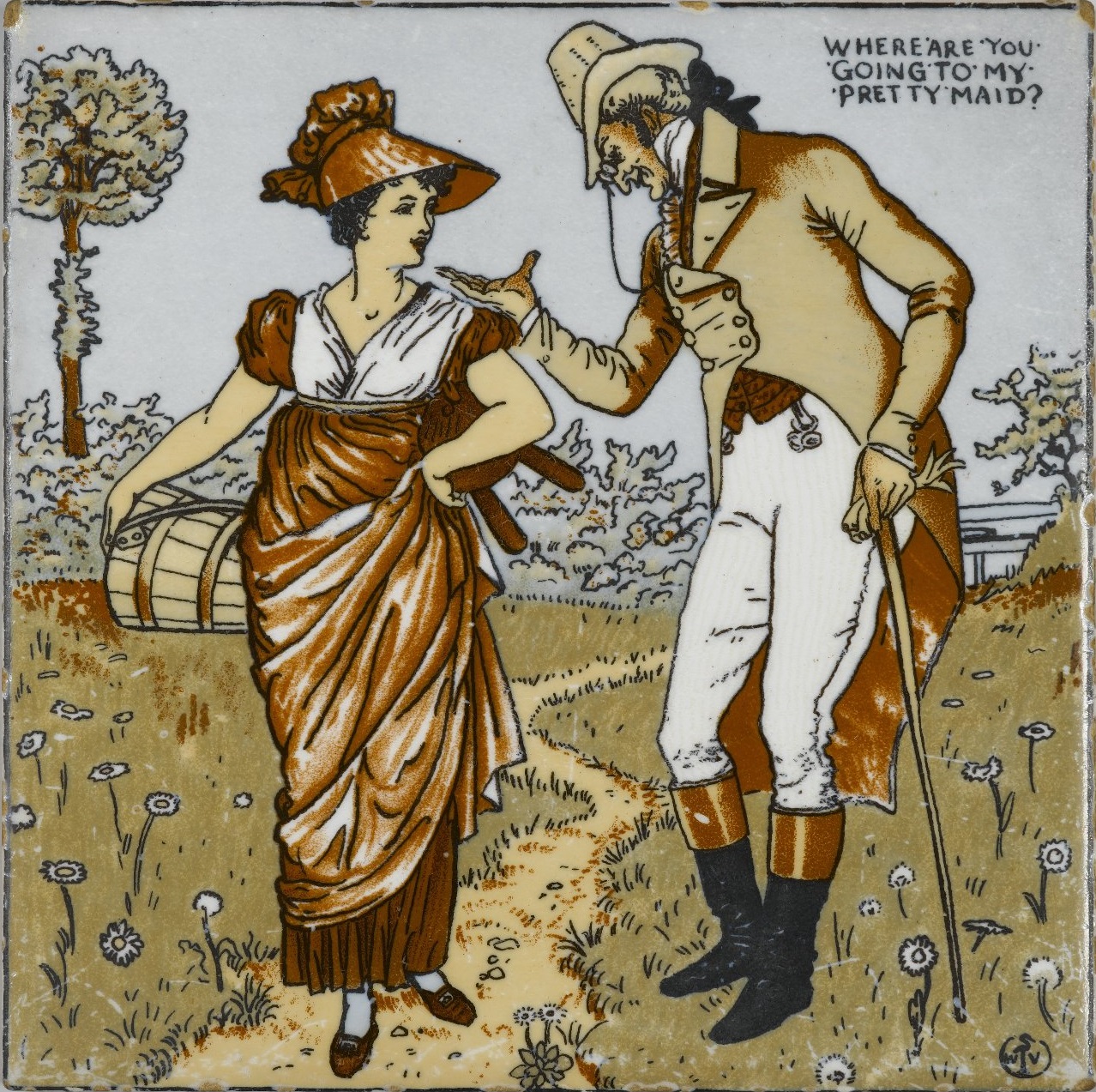|
Josiah Wedgwood
Josiah Wedgwood (12 July 1730 – 3 January 1795) was an English potter, entrepreneur and abolitionist. Founding the Wedgwood company in 1759, he developed improved pottery bodies by systematic experimentation, and was the leader in the industrialisation of the manufacture of European pottery. The renewed classical enthusiasms of the late 1760s and early 1770s were of major importance to his sales promotion. His expensive goods were in much demand from the upper classes, while he used emulation effects to market cheaper sets to the rest of society. Every new invention that Wedgwood produced – green glaze, creamware, black basalt, and jasperware – was quickly copied. Having once achieved efficiency in production, he obtained efficiencies in sales and distribution. His showrooms in London gave the public the chance to see his complete range of tableware. Wedgwood's company never made porcelain during his lifetime, but specialised in fine earthenwares and stonewares that ... [...More Info...] [...Related Items...] OR: [Wikipedia] [Google] [Baidu] |
George Stubbs
George Stubbs (25 August 1724 – 10 July 1806) was an English painter, best known for his paintings of horses. Self-trained, Stubbs learnt his skills independently from other great artists of the 18th century such as Joshua Reynolds and Thomas Gainsborough. Stubbs' output includes history paintings, but his greatest skill was in painting animals (such as horses, dogs and lions), perhaps influenced by his love and study of anatomy. His series of paintings on the theme of a lion attacking a horse are early and significant examples of the Romanticism, Romantic movement that emerged in the late 18th century. He enjoyed British royal family, royal patronage. His painting ''Whistlejacket'' hangs in the National Gallery, London. Biography Stubbs was born in Liverpool, the son of a currier, or leather-dresser, John Stubbs, and his wife Mary.Judy Egerton, Egerton, Judy (2007). George Stubbs, Painter: Catalogue raisonné'. New Haven, Conn.: Yale University Press. . p. 10. Informat ... [...More Info...] [...Related Items...] OR: [Wikipedia] [Google] [Baidu] |
Transfer Printing
Transfer printing is a method of decorating pottery or other materials using an engraved copper or steel plate from which a monochrome print on paper is taken which is then transferred by pressing onto the ceramic piece.John Fleming (art historian), Fleming, John & Hugh Honour. (1977) ''The Penguin Dictionary of Decorative Arts. '' London: Allen Lane, p. 800. Pottery decorated using this technique is known as transferware or transfer ware. It was developed in England from the 1750s on, and in the 19th century became enormously popular in England, though relatively little used in other major pottery-producing countries. The bulk of production was from the dominant Staffordshire pottery industry. America was a major market for English transfer-printed wares, whose imagery was adapted to the American market; several makers made this almost exclusively. The technique was essential for adding complex decoration such as the Willow pattern to relatively cheap pottery. In particular, ... [...More Info...] [...Related Items...] OR: [Wikipedia] [Google] [Baidu] |
Etruria Hall
Etruria Hall in Etruria, Stoke-on-Trent, Staffordshire, England is a Grade II listed house and former home of the potter Josiah Wedgwood. It was built between 1768–1771 by Joseph Pickford. The hall was sold by the Wedgwoods in the 19th century and is now part of a hotel. History The Wedgwoods Etruria Hall was built between 1768-1771 by Joseph Pickford, for Josiah Wedgwood, near his new recently built, Etruria works. The majority of the 'ceilings, ornamental friezes and chimney pieces' were designed by John Flaxman between 1781-1787. An entry in the 1784-1785 Wedgwood company ledger indicates that at least one of the ceilings was designed by William Blake, although it cannot be certain that this design was ever implemented. The hall was the site of the innovative research into photography by Thomas Wedgwood in the 1790s. There is a small commemorative plaque on the Hall. Due to financial difficulties Etruria Hall was sold in the 1840s by Francis Wedgwood, who moved to the sm ... [...More Info...] [...Related Items...] OR: [Wikipedia] [Google] [Baidu] |
Emma Darwin
Emma Darwin (; 2 May 1808 – 2 October 1896) was an English woman who was the wife and first cousin of Charles Darwin. They were married on 29 January 1839 and were the parents of ten children, seven of whom survived to adulthood. Early life Emma Wedgwood was born at the family estate of Maer Hall in Maer, Staffordshire, the youngest of seven children of Josiah Wedgwood II and his wife Elizabeth "Bessie" (née Allen). Her grandfather Josiah Wedgwood had made his fortune in pottery, and like many others who were not part of the aristocracy, they were nonconformist, belonging to the Unitarian church. Charles Darwin was her first cousin; their shared grandparents were Josiah and Sarah Wedgwood, and as the Wedgwood and Darwin families were closely allied, they had been acquainted since childhood. She was close to her sister Fanny, the two being known by the family as the "Doveleys", and was charming and messy, accounting for her nickname, "Little Miss Slip-Slop". She helpe ... [...More Info...] [...Related Items...] OR: [Wikipedia] [Google] [Baidu] |
Charles Darwin
Charles Robert Darwin ( ; 12 February 1809 – 19 April 1882) was an English Natural history#Before 1900, naturalist, geologist, and biologist, widely known for his contributions to evolutionary biology. His proposition that all species of life have descended from a Common descent, common ancestor is now generally accepted and considered a fundamental scientific concept. In a joint presentation with Alfred Russel Wallace, he introduced his scientific theory that this Phylogenetics, branching pattern of evolution resulted from a process he called natural selection, in which the struggle for existence has a similar effect to the artificial selection involved in selective breeding.. Darwin has been described as one of the most influential figures in human history and was honoured by Burials and memorials in Westminster Abbey, burial in Westminster Abbey. Darwin's early interest in nature led him to neglect his medical education at the University of Edinburgh Medical Schoo ... [...More Info...] [...Related Items...] OR: [Wikipedia] [Google] [Baidu] |
Darwin–Wedgwood Family
The Darwin–Wedgwood family are members of two connected families, each noted for particular prominent 18th-century figures: Erasmus Darwin, a physician and natural philosopher, and Josiah Wedgwood FRS, a noted potter and founder of the eponymous Josiah Wedgwood & Sons pottery company. The Darwin and Wedgwood families were on friendly terms for much of their history and members intermarried, notably Charles Darwin, who married Emma Wedgwood. The most notable member of the family was Charles Darwin, a grandson of both Erasmus Darwin and Josiah Wedgwood. The family also included at least ten Fellows of the Royal Society, and several artists and poets (among whom was the 20th-century composer Ralph Vaughan Williams). Presented below are brief biographical descriptions and genealogical information, and mentions of some notable descendants. (The individuals are listed by year of birth and grouped into generations.) The relationship to Francis Galton, and to his immediate ancesto ... [...More Info...] [...Related Items...] OR: [Wikipedia] [Google] [Baidu] |
Society For Effecting The Abolition Of The Slave Trade
The Society for Effecting the Abolition of the Slave Trade, also known as the Society for the Abolition of the Slave Trade, and sometimes referred to as the Abolition Society or Anti-Slavery Society, was a British abolitionist group formed on 22 May 1787. The objective of abolishing the slave trade was achieved in 1807. The abolition of slavery in all British colonies followed in 1833. Adam Hochschild posits that this anti-slavery movement is the first peaceful social movement which all modern social movements are built upon. A number of the founders had been meeting at George Yard since 1783, and over four years grew their circle of friends to include Thomas Clarkson, an unknown at that time. The society was established by twelve men; including individuals who later became prominent campaigners, such as Thomas Clarkson and Granville Sharp. As Anglicans they were able to be more influential in Parliament than the more numerous Quaker founding members - given Non-conformists ... [...More Info...] [...Related Items...] OR: [Wikipedia] [Google] [Baidu] |
Wedgwood Anti-slavery Medallion
The Wedgwood anti-slavery medallion was an abolitionist symbol produced and distributed by British potter and entrepreneur Josiah Wedgwood in 1787 as a seal for the '' Society for the Abolition of the Slave Trade''. The medallion depicts a kneeling black man in chains with his hands raised to the heavens; it is inscribed with the phrase "Am I not a man and a brother?" The figure was likely designed and modelled by Henry Webber and William Hackwood with Wedgwood's involvement. The medallion was produced as a jasperware cameo by Wedgwood's factory—the Etruria Works— and widely distributed in Britain and the United States. These cameos were worn as pendants, inlaid in snuff boxes, and used to adorn bracelets and hair pins, rapidly becoming fashionable symbols of the British abolition movement. The medallion helped to further the abolitionist cause and is today accepted as "the most recognizable piece of antislavery paraphernalia the movement ever produced." Origin On Jul ... [...More Info...] [...Related Items...] OR: [Wikipedia] [Google] [Baidu] |
Buy One, Get One Free
"Buy one, get one free" or "two for the price of one" is a common form of sales promotion. Marketing strategy The economist Alex Tabarrok has argued, that the success of this promotion lies in the fact that consumers value the first unit significantly more than the second one. So compared to a seemingly equivalent "Half price off" promotion, they may only buy one item at half price, because the value they attach to the second unit is lower than even the discounted price. History The concept of "buy one, get one free" was devised in the 18th century by retail entrepreneur Josiah Wedgwood. This technique is commonly known in the marketing industry by the acronym BOGOF, or simply BOGO. Criticism Two-for-one promotions in the food industry have been criticized as contributing to food waste The causes of food going uneaten are numerous and occur throughout the food system, during food production, production, food processing, processing, Food distribution, distribution, ... [...More Info...] [...Related Items...] OR: [Wikipedia] [Google] [Baidu] |
Self-service
Self-service is a system whereby customers acquire (or serve) themselves goods or services, paying for the items at a point-of-sale, as opposed to a shop assistant or clerk acquiring goods or providing services in addition to taking payment. Common examples include ATMs, coin-operated laundrettes, self-service checkouts, self-service petrol stations, and buffet restaurants. History Grocery stores and supermarkets Before the 20th century many businesses such as grocery stores had clerks or assistants who would serve customers individually, taking required items from the shelves, before adding up the total at the till. Some products such as ham, cheese, and bacon were sliced to order, while dry goods such as flour would be weighed out from large barrels. On September 6th 1916 the first Piggly Wiggly opened in Memphis, Tennessee by Clarence Saunders, the world's first self-service grocery store. Customers would pick up a wicker basket upon entering the store, and then w ... [...More Info...] [...Related Items...] OR: [Wikipedia] [Google] [Baidu] |
Money-back Guarantee
A money-back guarantee, also known as a satisfaction guarantee, is essentially a simple guarantee that, if a buyer is not satisfied with a product or service, a refund will be made. The 18th century entrepreneur Josiah Wedgwood pioneered many of the marketing strategies used today, including the satisfaction-or-money-back guarantee on the entire range of his pottery products. He took advantage of his guarantee offer to send his products to rich clientele across Europe unsolicited. The money-back guarantee was also a major tool of early U.S. mail order sales pioneers in the United States such as Richard Sears and Powel Crosley Jr. to win the confidence of consumers. False claims The use of money back guarantees has grown significantly over the last few years and has become standard practice in direct marketing across all media. Very often, unreliable businesses use it as a tactic to reel the customer into a false sense of safety. Many guarantees by sellers often fall outside the ... [...More Info...] [...Related Items...] OR: [Wikipedia] [Google] [Baidu] |






